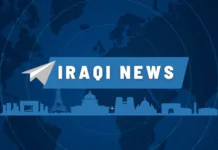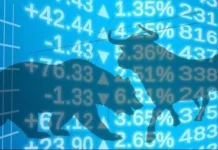Good Morning ,
The Global Reset in Motion: Swap Lines, Debt Shifts & the New Financial Blueprint
Currency swaps, debt reversals, and digital networks are quietly redrawing the architecture of global finance.
A System Under Strain — and Redesign
- Swap lines as soft power: The U.S. Treasury’s new $20 billion currency swap with Argentina shows how economic diplomacy is replacing traditional aid. The dollar is being used not only as a reserve asset but as an instrument of geopolitical alignment.
- Debt flows reversing: For the first time in two decades, developing nations are net repaying China, a signal that Beijing’s Belt & Road era of easy credit has entered a phase of collection and consolidation.
- Rise of alternative rails: BRICS’ new digital-currency settlement network and commodity-based exchanges offer parallel systems for trade and payment outside Western financial chokeholds.
These developments are not random. They reveal a world shifting from unipolar control toward competing, asset-anchored financial architectures.
Friction and Fragmentation
- Sovereignty backlash: Nations dependent on the dollar are experimenting with regional settlement systems to avoid the risk of sanctions or reserve seizures.
- Liquidity divergence: As financial systems decouple, cross-border liquidity and interoperability will become the new frontlines of competition.
- Hidden power shift: Emerging markets able to host trusted digital settlement systems will gain leverage far beyond their GDP share.
Why This Matters
We are witnessing a reset in slow motion — not an overnight collapse, but a re-wiring of capital routes, reserve logic, and political leverage. What used to be economics is now strategy.
This is not just politics — it’s global finance restructuring before our eyes.
@ Newshounds News™ Exclusive
Sources:
• Al Jazeera – U.S. buys Argentinian pesos, finalises $20 billion currency swap (aljazeera.com)
• Reuters – Developing nations rack up $3.9 billion net debt payments to China (reuters.com)
• Watcher Guru – BRICS digital currency network bypasses the West (watcher.guru)
~~~~~~~~~
When the South Pays Back: China’s Waning Grip and the Next Debt Order
Once the world’s lender of choice, China now finds its capital flowing back home — and its influence shrinking.
The Numbers Tell the Story
- According to Boston University’s Global Development Policy Center, developing nations are now paying $3.9 billion more per year to China than they receive in new loans.
- From 2008 to 2024, China’s policy banks lent over $472 billion to infrastructure projects across Asia, Africa, and Latin America. Now, many of those loans are maturing — and repayment, not expansion, defines Beijing’s balance sheet.
- The net reversal began in 2022 and 2023, marking a structural pivot in China’s development diplomacy.
From Builder to Collector
- Debt-collector posture: China is tightening repayment schedules and invoking collateral clauses — including escrowed commodity revenues — in nations like Zambia and Sri Lanka.
- Soft-power erosion: With less new money flowing, Beijing’s ability to buy goodwill through development finance is weakening.
- Private-sector dominance: Despite the headlines, private Western lenders still hold the majority of developing-world debt, underscoring that the true debt crisis is global, not just Sino-centric.
Strategic Repercussions
- Funding vacuum: As China retrenches, BRICS and regional blocs may need to mobilize local-currency credit to fill the gap.
- Dollar corridor pressure: Reduced Chinese lending could pull countries back into U.S. financial orbit — unless alternative rails such as the BRICS digital currency network scale quickly.
- Emerging multipolar credit system: Expect South–South and regional lending consortia to multiply, each experimenting with gold- or commodity-backed settlement models.
Why This Matters
China’s shrinking role marks a turning tide in global leverage. The creditor of the Global South is now a collector, and that changes who holds the reins of tomorrow’s monetary system.
This is not just politics — it’s global finance restructuring before our eyes.
@ Newshounds News™ Exclusive
Sources:
• Reuters – Developing nations rack up $3.9 billion net debt payments to China (reuters.com)
• Reuters – China shifts from banker to debt collector (reuters.com)
• Reuters – China’s collateral demands curbing emerging countries’ fiscal control (reuters.com)
~~~~~~~~~
Wall Street’s Gold Grab: 1,300+ Tonnes Before the BRICS Currency Launch
As BRICS prepares to unveil its asset-backed digital currency, U.S. financial giants quietly accumulate historic amounts of gold.
A Massive Gold Rush on the Eve of Monetary Change
- Wall Street accumulates 1,300+ tonnes: In the months leading up to the BRICS currency launch, major U.S. institutions — including hedge funds and sovereign-backed asset managers — have reportedly purchased over 1,300 tonnes of physical gold, a figure equivalent to one-third of annual global mine production.
- Market data confirms the trend: CME futures reports and COMEX vault inflows show surging delivery requests, suggesting institutional investors are converting paper contracts into allocated bullion.
- Strategic timing: Analysts note that the timing coincides with BRICS’ plans to roll out an asset-backed settlement currency, raising speculation that U.S. financial players are positioning for a revaluation of gold’s role in global finance.
Wall Street’s moves suggest that even Western markets are preparing for a post-dollar valuation paradigm — one where tangible reserves, not fiat credit, anchor global confidence.
Gold as the Hedge Against Monetary Fragmentation
- Repricing risk: Central banks and private institutions are betting that gold could be revalued as part of a new settlement mechanism under the BRICS bloc.
- Reserve diversification: The accumulation also reflects U.S. investors’ concerns over geopolitical fragmentation, rising sovereign debt, and the declining share of the dollar in global reserves.
- Historic parallel: The scale mirrors accumulation trends last seen before major monetary realignments — notably the Bretton Woods collapse (1971) and the 1979 gold run amid inflationary shocks.
When capital quietly shifts toward hard assets, it signals anticipation — not fear. Gold is being treated once again as the ultimate ledger of value.
Global Context: BRICS’ Strategic Gold Standard
- BRICS’ next move: Reports indicate the upcoming BRICS settlement platform will allow member states to clear trade in tokenized assets backed by gold and other commodities.
- De-dollarization by design: This would enable trade bypassing Western payment systems, rebalancing global reserve power toward the East.
- Power convergence: As the U.S. financial elite accumulates what BRICS intends to formalize, both sides of the financial divide appear to be converging — not in cooperation, but in anticipation of the same shift.
The lines between East and West may blur if both are now preparing for the same monetary realignment.
Why This Matters
Gold is no longer just a hedge — it’s the new pivot point of credibility in a fragmented world.
If both BRICS and Wall Street are preparing for a return to tangible settlement systems, it marks the most profound redefinition of monetary trust since the end of the gold standard.
This is not just politics — it’s global finance restructuring before our eyes.
@ Newshounds News™ Exclusive
Sources:
• Watcher Guru – Wall Street Buys 1,300+ Tonnes of Gold Before BRICS Currency Launch (watcher.guru)
• World Gold Council – Central Bank Gold Demand Hits Record Highs (2024–2025)
• Reuters – Gold demand and geopolitical risk drive institutional accumulation
• IMF Bulletin – Asset-Backed Settlement Systems and Reserve Diversification
~~~~~~~~~
Seeds of Wisdom Team RV Currency Facts Youtube and Rumble
Newshound’s News Telegram Room Link
Follow the Gold/Silver Rate COMEX
Follow Fast Facts
Seeds of Wisdom Team™ Website






